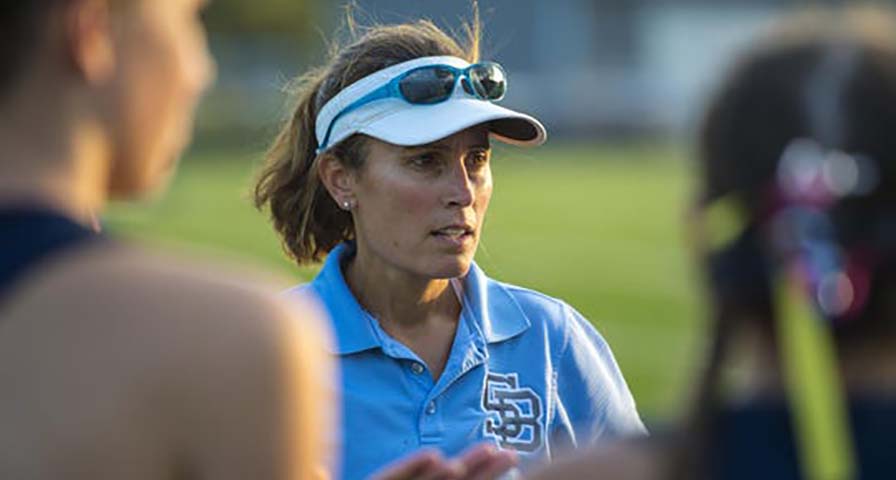Originally published March 27, 2020 in the Burlington Free Press.
By Austin Danforth
Setting up an internet-based classroom is one thing, and certainly not an easy one at that: new technology to implement and troubleshoot, lessons to rewrite.
But what on earth does a digital gym class look like?
 As schools around Vermont grapple with mandated remote learning for the next two-plus months due to the ongoing COVID-19 pandemic, physical education teachers must adapt on the fly to a situation that has shredded the foundation of how they do what they do.
As schools around Vermont grapple with mandated remote learning for the next two-plus months due to the ongoing COVID-19 pandemic, physical education teachers must adapt on the fly to a situation that has shredded the foundation of how they do what they do.
COVID-19 is the official name of the disease related to the coronavirus that first started to affect people in China at the end of 2019. In the latest, sweeping response to the outbreak, Gov. Phil Scott on Thursday announced the closure of Vermont’s schools for in-person instruction through the end of the current academic year.
COVID-19 and education: Vermont’s students will continue remote learning for remainder of the school year
It’s an answer to the problem that prompts more questions. For instance, how can a student practice a volleyball serve without a ball, or a net, or a partner available at home?
“It’s hard to teach that not being there, having kids have access to volleyballs, someone to do it with … it’s a myriad of things,” said Dean Corkum, a longtime physical education teacher at Essex High School. “We’re still working through it.”
It’s a whole new game.
“Now as a PE teacher you’ve got to adapt and learn Seesaw, Zoom and Google classroom. Those are all new concepts for us to get kids moving,” said Paul Pecor, a physical education teacher at Porters Point School in Colchester. “Everything we do is contact with kids, everything is hands-on. That’s why this is so tough.”
Said Corkum: “For me the hard part is not having the face-to-face contact with them, because that’s the best part of my day.”
At South Burlington’s Frederick H. Tuttle Middle School, the roughly 570 kids in grades 6-8 are expected to get 30 minutes of exercise a day and log that activity in a Google document for teachers.
Their instructors monitor the input, then provide personalized feedback and interaction with each student. On Fridays, the teachers offer links to YouTube videos with different workouts that kids can try at home.
“Trying to keep track of all that is really time-consuming,” said Anjie Soucy, one of Tuttle’s two physical education teachers.
“I’m literally at my computer all day,” said Soucy. “The kids we haven’t heard anything from, we’re trying to reach out to them. I’m not used to being at a computer (this much) — this is out of my comfort zone.”
‘Thinking outside the box is what you have to do’
With younger children who require more supervision, implementing technology is even trickier.
The venerable and popular parachute can’t spring to life this year without the 15-20 kids required to make it soar. Suggesting neighborhood tag or capture-the-flag games isn’t an option either.
After connecting with each of his K-2 school’s classrooms during the day and asking kids what they’ve done to be active, Pecor said the next step is devising games and activities kids can do at home. The tricky part is threading the needle between being engaging and not too demanding of parents’ time.
“Thinking outside the box is what you have to do,” Pecor said.“The important thing now more than ever is to get kids moving.”
‘Relying on their integrity’
High schoolers’ capability with apps and web-based platforms has aided the transition to remote learning for some aspects of physical education, Corkum said.
Students can check in with teachers on days they would’ve been in class, sharing workouts or photos of themselves in action.
“With technology where it’s at these days we’ve never been better prepared to have it be remote learning even though it’s a really difficult thing to do,” Corkum said. “We’re relying on their integrity to know if they’re getting the workouts done.”
It works well for fitness-based classes and independent-study lessons. But skill-based units in specific sports are a particular challenge, as is providing instruction for over a hundred students when they aren’t subdivided into groups of 15 or 20.
The abrupt closure of school hallways means logistics are still evolving each day.
Some students are realizing their gear is still in lockers at school — in rooms they aren’t allowed to access. But class must go on. And each day offers another chance appreciate for the former status quo.
“The one thing I’d take away from this is online learning is not the same as person-to-person,” Soucy said. “It’s just not.”
Seeking information about IHT’s Remote Learning program?




